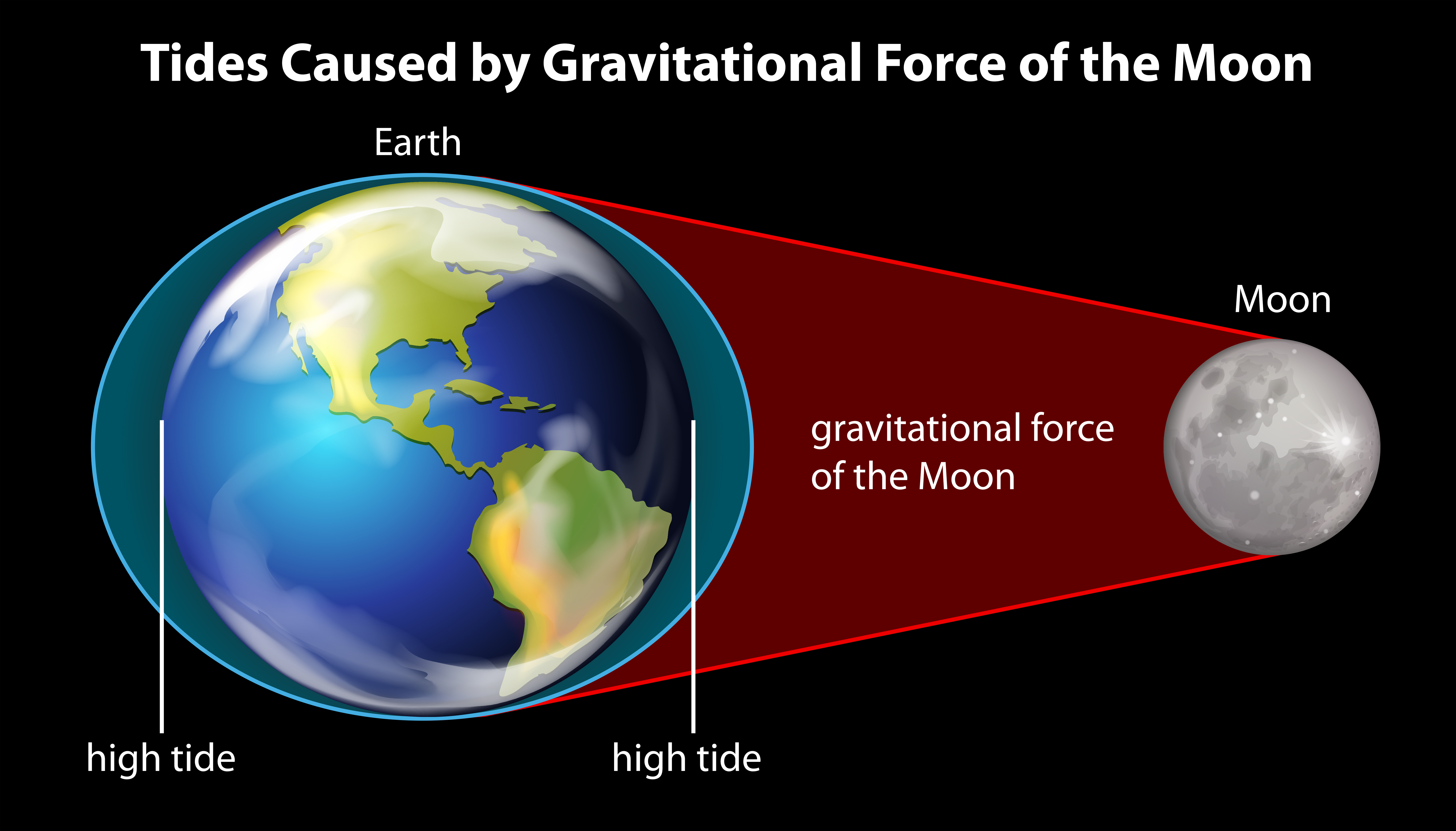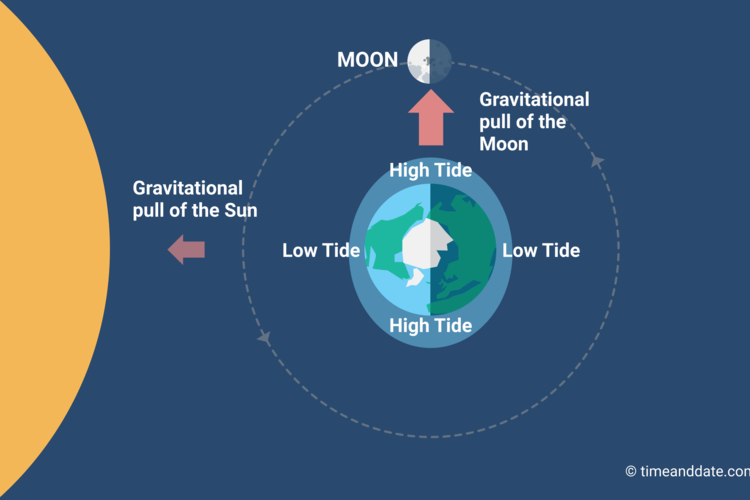

Ganymede and Europa pull it out this circular orbit. Io's core is coolish and hard when it is in a fairly circular orbit. The end result is a nice hysteresis loop. Victorian Astronomy Chart showing sizes of the planets, Phases of the moon, Ocean Tides,Solar System. This in turn results in factors that decrease Io's eccentricity. Lunar and Solar influence on Earths Oceans tides. The moon appears new (dark) when it is between the Earth and the sun. This occurs twice each lunar month (about 29.5 days on average).
#MOON PLANET INFLUENCE OCEAN TIDE GRAPH FULL#
(Io's tides would be frozen if Io was in a circular orbit.) The increase in tidal effects in turn causes internal heating in Io. The Effect of a Full or New Moon During full or new moons which occur when the Earth, sun, and moon are nearly in alignment average tidal ranges are slightly larger. This increased eccentricity in turn increases the tidal effects by Jupiter on Io. Since the moon exerts the strongest influence because of its proximity, the main. These resonance effects tend to make Io's orbit more eccentric. The sun and moon are the two main influences on the earths pattern of tides. Io is caught in a 1:2:4 resonance with Ganymede and Europa. We see this on the Earth's Moon, where eccentricity results in moonquakes. For an object in an eccentric orbit, the object's rotation rate and the object's orbital rate are rarely equal. Moons May Yield Clues to What Makes Planets Habitable. The Earth rotates more quickly than the Moon orbits, so the gravitational tug of the tidal. The concept of tidal bulge is a useful fiction, but fiction nonetheless. Tides, in turn, significantly affect the intensity of methane emissions from the Arctic Ocean. Every year, the Moon moves further from the Earth by almost 4cm because of the tides it causes on Earth. That difference would affect the height of the moon tide as the tides would be higher, the closer the moon and Earth were. It's a difference that you would notice and it's fairly significant, Irwin said.Īs for the moon's tides changing the Earth's tides, there shouldn't be any direct effect. It's more local conditions on the Earth and the location of the moon in its orbit that matters.Since the tidal bulge is always in the same place, how would that affect ocean tides? Over the course of a month the moon moves from closer to the Earth (perigee) to farther away. There is, however, one change to consider: the orbit of the moon around the Earth isn't perfectly circular. During neap tides (First and Last Quarter Moons), the Sun and Moon are at right angles to each other and the solar tide has an opposing effect on the lunar tide. This creates higher high tides, and lower low tides. One important difference is that since the moon always puts the same face towards the Earth, there would be a permanent bulge on the lunar oceans on the Earth-facing side. The declination of the moon changes throughout the month, up to as much as 28.5. Moon and Earth are all in alignment and the solar tide has an additive effect on the lunar tide. She said that means if you get one or two feet of height from the tides then on the moon then that would be 22 to 44 feet higher at the moon's tide or nearly seven to 13 meters higher. To create tides, the moon would need to have continents and oceans like the Earth does.Įverything else being equal, the tides raised by the the Earth on the moon would be 22 times greater than the tides of moon on the Earth, Irwin calculated. To answer the question, assume the moon has the same mass and radius as it does now, said Judith Irwin, a professor of Physics and Astronomy at Queen's University in Kingston, Ont. This is why, as the Earth rotates, the area closest to the moon experiences its gravitational pull.

Laughlin Eddy in Merritt, B.C., asks: "What would happen, hypothetically speaking, if the moon also had enough liquid water to have tides? What impact would the Earth have on the moon's tides? Could it change the Earth's tides in any way?" The moon’s mass is smaller than the mass of Earth (about 80 times smaller) but it still has gravity. We know the moon has a tremendous impact on the Earth's tides.


 0 kommentar(er)
0 kommentar(er)
